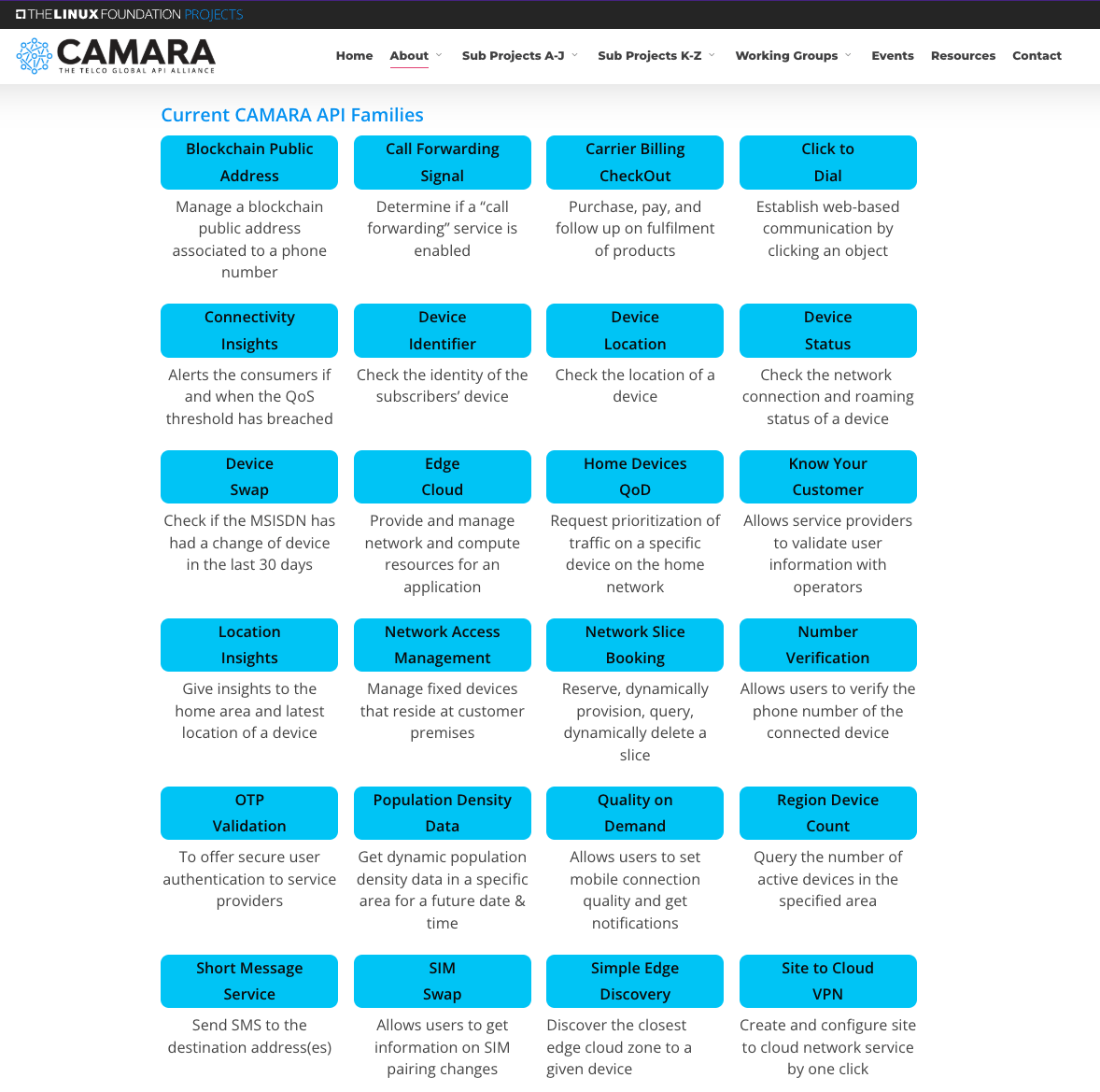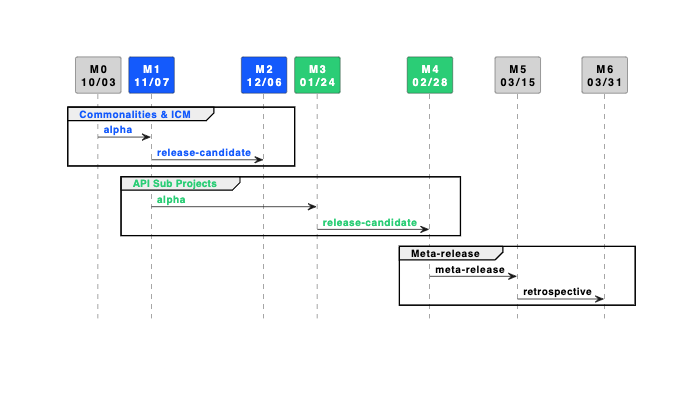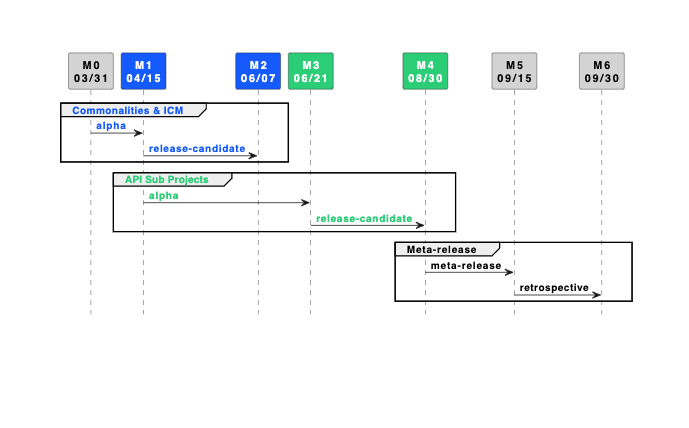
In 2022 CAMARA (Common API Marketplace and Repository Architecture) was announced as an open-source project in the Linux Foundation, as a global telecommunications API alliance with Vodafone as a member. Its primary goal is to bridge the gap between telecom networks and application developers by creating a uniform API ecosystem.
The initiative is structured into sub projects and working groups. Sub projects are where APIs that belong together (think anti fraud APIs such as SIM Swap and Number Verify) are developed and maintained. Working groups then cover possibly multiple sub projects and are responsible for maintaining the backlog as well as topics common for all sub projects, also known as "commonalities".

Figure 1: CAMARA API families
The largest telecommunications organisations in the world as well as technology giants have representatives on the CAMARA governing board, which runs multiple CAMARA open working groups. Meeting for these groups are public and its schedules can be found on the CAMARA portal.
CAMARA API specifications and documentation are actively maintained within open-source code repositories on their GitHub.
Main goal of the CAMARA project
The main goal of the CAMARA project is to solve the following problems:
- Consistency: Network APIs built to one standardised spec to help reduce costs.
- Demand: Collected from the GSMA, but also from developer customers directly in CAMARA and the Open Gateway Local Market Champion activities.
- Simplicity: Developer-friendly APIs that simplify telco complexity.
- Scale: APIs that help developers scale by offering the ability to deploy apps on any CSP supporting the CAMARA standard.
- Accessibility: CAMARA project is open sourced in the Linux Foundation, facilitating operator deployment, developer uptake and improved time to market.
CAMARA API meta-releases
The release of CAMARA APIs are done through meta-releases. They are announced every six months (one in the Spring and a second one in the Autumn) and provide a roadmap for the evolution of existing and release of new specifications.
Steering committees are the ones responsible for this process, which starts planning 12 months before the meta release date.
This year's Spring meta-release was announced in late March, whilst the Autumn meta-release is scheduled for late September. More details on the latter can be found here.

Figure 2: Spring 2025 meta release schedule

Figure 3: Autumn 2025 meta release schedule
CAMARA specification implementations
The CAMARA project is only responsible for defining the API specifications and standards. The actual implementation and deployment those belong to the specific telco providers (such as Vodafone), who are members of CAMARA governance board.
The GSMA Open Gateway map provides a view of which CAMARA APIs are being provided by which telco operators in which countries.

Figure 4: Example of API deployments on GSMA Open Gateway
Vodafone CAMARA API releases
Vodafone has its own release schedule for CAMARA APIs, and at the time of writing supports the following versions of specification:
Get involved with CAMARA today!
To stay updated on the latest developments and meta-releases from CAMARA, be sure to follow their GitHub repository and join the public meetings listed on the CAMARA portal. Whether you're a developer looking to integrate telecom capabilities or a telecom provider aiming to streamline API implementations, CAMARA offers a robust framework to enhance your projects. Get involved today and be part of the future of telecommunications API innovation! 🚀
